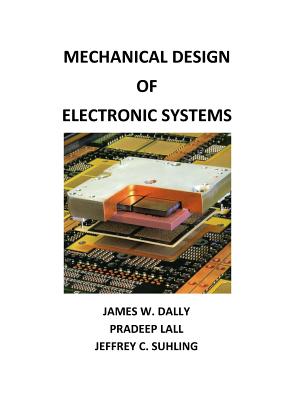Mechanical Design of Electronic Systems

Mechanical Design of Electronic Systems
This book has been written for engineers to serve as a first text on the packaging of electronic systems. The material has been written for an engineering student or for a practicing professional working as a mechanical or electrical engineer with a company producing electronic products or systems. The engineering student should have completed fundamental courses in the engineering sciences, thermal sciences and materials as prerequisites. The practicing professional will probably be at the early stages of his or her career and be more concerned with the technical details of the design rather than the business strategy of a product line. This book is an introduction to the design of electronic systems from a mechanical engineering perspective, although attention is given to circuit analysis that may be of more interest to the electrical engineer. As such it covers a very broad range of topics from the physics of semiconductors to the design of advanced high performance heat exchangers. To accommodate this breadth, we have divided the text into four independent parts. The first, Part 1, which includes three chapters, deals with foundations for design. Chapter 1 provides an overview of the entire field, covering in some detail the mechanical design issues that arise in developing an electronic system. Also covered are business aspects of this industry, particularly as they are related to a rapidly changing technology, which leads to early obsolescence of an existing product line, and exacting requirements for investing in new product development. Chapter 2 describes electronic components with emphasis on semiconductor devices. Importance is placed on silicon technology and the new developments in logic and memory circuits with higher levels of integration. We try to show in this chapter the dynamics of the technology and the emerging design problems associated with the ever increasing scale of integration. The most important problems are handling high I/O counts and dissipating very large heat flux with exceedingly small temperature differences. Chapter 3 covers circuit analysis. The conventional methods of analysis of ordinary ac and dc circuits are briefly reviewed. However, the emphasis is placed on transmission lines where inductance, resistance and capacitance are distributed along the length of the line. This development is new to most mechanical engineers and it is critical to their understanding of propagation delay, line charging and pulse refle
PRP: 1060.20 Lei
Acesta este Pretul Recomandat de Producator. Pretul de vanzare al produsului este afisat mai jos.
954.18Lei
954.18Lei
1060.20 LeiLivrare in 2-4 saptamani
Descrierea produsului
This book has been written for engineers to serve as a first text on the packaging of electronic systems. The material has been written for an engineering student or for a practicing professional working as a mechanical or electrical engineer with a company producing electronic products or systems. The engineering student should have completed fundamental courses in the engineering sciences, thermal sciences and materials as prerequisites. The practicing professional will probably be at the early stages of his or her career and be more concerned with the technical details of the design rather than the business strategy of a product line. This book is an introduction to the design of electronic systems from a mechanical engineering perspective, although attention is given to circuit analysis that may be of more interest to the electrical engineer. As such it covers a very broad range of topics from the physics of semiconductors to the design of advanced high performance heat exchangers. To accommodate this breadth, we have divided the text into four independent parts. The first, Part 1, which includes three chapters, deals with foundations for design. Chapter 1 provides an overview of the entire field, covering in some detail the mechanical design issues that arise in developing an electronic system. Also covered are business aspects of this industry, particularly as they are related to a rapidly changing technology, which leads to early obsolescence of an existing product line, and exacting requirements for investing in new product development. Chapter 2 describes electronic components with emphasis on semiconductor devices. Importance is placed on silicon technology and the new developments in logic and memory circuits with higher levels of integration. We try to show in this chapter the dynamics of the technology and the emerging design problems associated with the ever increasing scale of integration. The most important problems are handling high I/O counts and dissipating very large heat flux with exceedingly small temperature differences. Chapter 3 covers circuit analysis. The conventional methods of analysis of ordinary ac and dc circuits are briefly reviewed. However, the emphasis is placed on transmission lines where inductance, resistance and capacitance are distributed along the length of the line. This development is new to most mechanical engineers and it is critical to their understanding of propagation delay, line charging and pulse refle
Detaliile produsului









